ALBERTA ADAMS - SAY BABY SAY CANNONBALL
LARRY GARNER - BATON ROUGE EVIDENCE
ODETTA - BLUES EVERYWHERE I GO M.C. RECORDS
ROY GAINES - I GOT THE T-BONE WALKER BLUES GROOVE NATION
KATHI MCDONALD - ABOVE & BEYOND MERRIMACK
STEVIE RAY VAUGHAN & DOUBLE TROUBLE EPIC/LEGACY
R.L. BURNSIDE - WISH I WAS IN HEAVEN SITTING DOWN FAT POSSUM
OTIS SPANN - LAST CALL MR. CAT
STEVIE RAY VAUGHAN - THE REISSUES SONY LEGACY
LLOYD JONES - LOVE GOTCHA BLIND PIG
JOHNNIE BASSETT & BLUES INSURGENTS - PARTY MY BLUES AWAY CANNONBALL
ROBERT LOCKWOOD JR. - THE COMPLETE TRIX RECORDINGS 32 BLUESPAUL DELAY - DELAY DOES CHICAGO Evidence
WILLIE DIXON - POET OF THE BLUES Legacy
MIGHTY SAM McCLAIN - BLUES FOR THE SOUL TELARC
STEVIE RAY VAUGHAN - BLUES AT SUNRISE LEGACY/EPIC
BILLY BRANCH - SATISFY ME HOUSE OF BLUES
T-BONE WALKER - THE VERY BEST OF KOCH
![]()
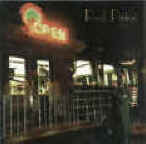 ROD
PRICE
ROD
PRICE
OPEN
The late 60’s was a landmark era for the Blues, helped
along by the English Blues revival which exploded around the world. Most of the early
English rock bands were deeply rooted in the blues. Young guitarists like Eric Clapton,
Peter Green, Jimmy Page and Jeff Beck faithfully copied Chicago Blues from the
masters--sometimes note for note! Eventually, they began to forge their own style of
Blues/Rock which became the dominant theme in popular music for more than a decade.
While all this was happening, Rod Price was sculpturing his own slide-guitar-based Blues style in London. In 1966 he answered an ad for a ‘Chicago-style’ Blues guitarist and got a job with Shakey Vick’s Big City Blues Band. The group played straight-ahead Blues, sticking as close to original arrangements as they could. The band lasted only two years but it was highly acclaimed. Champion Jack Dupree said it was "the best Blues band in Europe."
Price played with two more Blues groups before joining some ex-Savoy Brown alumni in 1971 to form Foghat, which would become one of the most successful English rock bands. For 30 years, Price led Foghat, racking up eight gold albums and many awards. Only recently, he came back to his first love to create an exceptional album of classic Blues.
Price romps through ten tunes, sliding his way through evergreens like Sittin’ On Top Of The World, Long Distance Call, Key To The Highway, Walking Blues and others. His old Blues partner, Shaky Vick, rejoins Price and adds some juicy harp to the mix. America owes England a big thanks for getting us interested in our own roots music again and Rod Price gets some of the credit along with the others who discovered the special magic in Blues back there in the schizophrenic sixties and brought it to our attention. Open is a fine tribute from a musician who very obviously loves the Blues.
![]()
SAY BABY SAY
CANNONBALL
Blues history includes a tradition of royalty. Blues Queens have been anointed since the beginning. Mamie Smith, who made the first blues recording, Ma Rainey, Memphis Minnie, and Dinah Washington all wore the crown. I think most would agree that Koko Taylor gets the title these days, but she’s not alone. All around the world, wherever there’s a Blues community, there’s usually a local "Queen of the Blues." Diamond Teeth Mary was the Tampa Bay Area’s pride and joy. Then there's Marva Wright in New Orleans, Roxy Perry in New York, Joanne Taylor in Colorado and in Detroit, Alberta Adams, a woman who can legitimately contend for the world title.
Adams likes to say that she was born with the blues. Back in the 20’s, she was given up for adoption by an alcoholic mother. Later she moved in with relatives in Detroit. She had to battle her numerous cousins for food. She got her start in show business as a dancer on Hastings Street--the street made famous by John Lee Hooker in his classic, "Boogie Chillun." When the regular singer didn’t show up one night, Alberta got her chance and she hasn’t stopped singing for more than 50 years.
It was on Hastings Street that the Chess brothers discovered the petite but powerful singer and signed her to their record label. She recorded several gems with Red Saunders’ band from Chicago. Later she recorded for the famous jazz label, Savoy. One of those songs, still in her repertoire, is the title for her latest album.
Say Baby Say, Life’s Trials and Tribulations According To Miss Alberta Adams, features Her Royal Highness in peak form, belying her age with a rocking and rollicking performance. Unlike many singers, Adams writes quite a bit of her own material. Her originals have the authenticity that comes from true-life experiences. Her backup band sparkles with Johnnie Bassett on guitar, Bill Heid on piano, Brian Miller on harmonica and solid horns. This is one of the more enjoyable cds I’ve listened to recently. Don’t be surprised to see it listed in the Handy nominees.
TopBATON ROUGE
EVIDENCE
Larry Garner’s stylish guitar, smooth vocals and persuasive songs made him a star in Europe many years before he started getting attention at home. The Korean War vet spent two decades working a day job at a chemical plant in Baton Rouge to support his family and playing the blues at night. Finally, he decided to take the plunge and become a full-time performer. He tells the story in "Blues Pay My Way," one of the highlights of this album.
Garner’s gamble paid off and his career has taken off since he gave up his day job. He recorded two well-received albums in Europe and in 1995, received raves for his American debut CD, You Need To Live A Little. That same year he recorded the songs on this album, but they were never released until Evidence Records picked up distribution rights recently.
There’s a little bit of everything on Baton Rouge and it’s all good--blues, bouncy shuffles, funk, gospel and more. Garner’s songs are as honest as anything I’ve heard. "I got to go with the feelin’ I got," he says in one song, and he does just that in songs about the human condition, real life stories to a blues beat. This is one of the more enjoyable CDs I’ve heard this year.
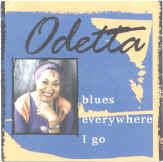
Odetta has been an icon of American music for half a century. Her career began in 1949 when she played a role in the road show of Finian’s Rainbow. She was a powerful voice for roots music in the fifties and kick-started the folk music wave of the sixties. Her potent recordings introduced many Americans and audiences world wide to African-American folk, blues, and gospel music. She was an inspiration to younger singers like Joan Baez and Bob Dylan.
Now, at the age when many are selecting a retirement home, Odetta is on the march again, touring extensively this year to promote her 50th anniversary in show business, and her new album, her first in 14 years.
Blues Everywhere I Go is a remarkable production. Odetta’s careful selection of songs pertinent to the human condition, and her warm robust performances, make it one of the most powerful and moving musical documents ever made. As Robert Gordon says in the liner notes, "What sets this album apart . . . is its reclamation of the soul of the blues."
Odetta's performance evokes images of the blues queens of the past--Memphis Minnie, Sippie Wallace, Ma Rainey, and Bessie Smith as she sings about poverty, loneliness, poor health, and unresponsive government. The lyrics for many of the songs could have been written recently, but most are decades old.
This is a very special album for anyone who is interested in the real roots of the blues and their significance in history. It is an outstanding achievement, which will not surprise anyone familiar with Odetta’s prior work. Watch for a local appearance by this living legend sometime soon. This will be one not to miss. Odetta’s tour dates are posted on the web at: www.mc-records.com.
I GOT THE T-BONE WALKER BLUES
GROOVE NOTE
Anything with "T-Bone Walker" in the title always gets my attention, so I was eager to hear what Roy Gaines had to contribute to the T-Bone collection. Like me, Roy has been a devotee of the T-Bone style for a long time. He is one of the few living players who performed with T-Bone and learned his tricks of the trade.
Roy was exposed to music as a youngster. His mother encouraged him and his older brother, Grady, to pursue a musical career. His first instrument was the piano, and Grady took up the saxophone. One night as Roy was playing in his brother’s band, he noticed all the girls in the audience were paying close attention to Grady when he walked the floor playing his sax. They would follow him back to the stage and toss their phone numbers and other items at him. Roy decided then and there to switch to the guitar. "I decided I had to play . . . something I could walk around with, if I wanted to have some effect on the girls like Grady did," he recalls.
When he was 14, Roy met his idol at City Auditorium in Houston. T-Bone was headlining the show and Roy was thrilled to go back stage and meet him. But he was petrified when the blues master invited Roy to join him on stage. "I was about to pee on myself" he says! But he handled himself so well that he got a compliment from T-Bone and several jobs as a consequence. He was even billed as "T-Bone Jr." for a while. Later, Roy followed T-Bone to California and in time they became great friends.
Roy considers himself the "keeper of the flame" of T-Bone’s legacy. And this album is one he has wanted to make for a long time. Roy has absorbed much of T-Bone’s style and lovingly recreates the smooth, sophisticated sound that was T-Bone’s trademark. Most of the songs are T-Bone originals. If you're a fan of T-Bone, you will enjoy this CD. I especially liked Roy's take on "Dream Girl," and his acoustic version of "Stormy Monday," but this is gratifying listening all the way. Right on Roy!
Top![]()
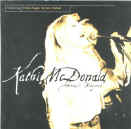
A long time ago in a California dive where Janis Joplin played now and then, I heard Kathi McDonald for the first time. Like many who saw the thin, intense blonde wail that night, I was blown away. Partly because the sound guy was apparently deaf, and partly because of the blistering energy Kathi put into her performance.
Kathi was always pretty intense. She got her big break in show biz when Ike Turner heard her singing in the audience at a performance and invited her to join the Ikettes, his backup vocalists. Not too many blondes became Ikettes.
In 1974, Kathi attracted the attention of Capitol Records which put out her first album, an astonishing debut, with guest appearances by Sly Stone, Neal Schon and other Bay Area music luminaries. I still get goosebumps listening to her wail on Willie Dixon’s "Insane Asylum." Later, Kathi moved to Seattle, where she became prominent in the Northwest music scene. Her powerful chops are still in great demand and she has appeared on more than 70 gold albums.
Above & Beyond, her newest CD, is a marvelous display of vocal skills, polished and ripened to near perfection. Backed up by ace organist, Brian Auger, harmonicat Lee Oskar and some of Seattle’s finest, Kathi belts her way through a dozen songs, singing with the passion and fire that has been her trademark all along. Auger matches McDonald’s intensity with some kick-ass solos that make me wonder why he hasn’t been recording more lately. If you’re a B-3 fan, don’t miss "I Put A Spell On You," and "Season Of The Witch."
Above & Beyond is on the tiny Merrimack label and you might not find it at all record stores, but keep looking--it's worth it!
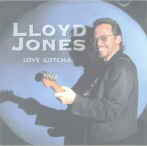
Lloyd Jones has been stirring up Northwest music patrons for a good many years. He is the lead player in a brand of music called Northwest Soul which headquarters in Portland, Oregon. Lloyd has honed his triple-threat chops--guitar, vocals and songwriting--to a razor edge on his latest CD.
Love Gotcha finds Jones busting loose with a dozen potent original songs, sliding smoothly from funk to rock to blues in a joyous display of virtuosity. Backed up by tight horns and rhythm, Jones soulful vocals and peppery guitar are the perfect ingredients for a blues banquet. Jones wrote all the songs for the new album and his lyrics are in the groove. I particularly enjoyed "Treat Me Like The Dog I Am," and "Old News" which starts off, "I used to be a headline, now I’m just old news. . ."
Lloyd loves to play music and to make people feel good. He notes in his liner notes "I do like feeling good! If I can bring that feeling to others with a good story, a strong beat and a goose-bump or two, well then . . . that’s my job. Oh, I do love my job." It’s easy to say after listening to Love Gotcha that Lloyd has done his job in spades!
(Note to party hosts: You can’t miss with this one!)
BACK TO THE BLUES
WOLF
Dana Gillespie is an outstanding singer. Sometimes called Europe's "Queen of the Blues, she has been singing professionally since 1965. I remember vividly an early album cover, which featured the young singer in a revealing negligee. She’s wearing long pants on the new album, but she still looks great and has never sounded better.
Dana has racked up 34 albums so far--most of them blues. Only a few have been released in America which may explain why this very talented lady is virtually unknown here, but is regarded as a superstar in Europe and elsewhere. She was voted Britain’s top female blues singer four years running, from 1992-1996.
Gillespie is also a populat DJ, hosting Twentieth Century Blues weekly on BBC Radio and a world music show broadcast every Saturday. She produces a blues festival on the Caribbean island of Mustique every year.
Her latest CD, BACK TO THE BLUES, presents Dana at the top of her game. Her voice is sultry and sensuous. Her songwriting is superb, and the band is slick and tight. The music ranges from sweet to saucy and every song has "blue" in the title. The album is available in the USA through Wolf’s American subsidiary Wolf USA and it is highly recommended. If you’d like to find out more about this remarkable singer, check out her website at: www.dana-gillespie.com
EVERY ROAD ENDS SOMEWHERE
RUF
Jimmy Johnson has been one of Chicago’s premier blues guitarists for more than twenty years. His compelling guitar and high-pitched vocals have been entertaining Windy City blues patrons since the ‘50s, but he is not well known nationally, most likely because he has recorded only a half-dozen albums and tours infrequently.
Johnson is more popular in Europe, where he has made several tours and recorded a couple of albums. His latest CD, recorded in France in 1997, is a billboard for Johnson’s magnificent skills. The music mix is one part soul, two parts blues and a pinch of zydeco for spice. Johnson blends the styles perfectly, as he amalgamates his main influences--Otis Rush, Freddie King, Magic Sam and Jimmy Dawkins.
Johnson’s song-writing skills blossom on eight originals. His lyrics deal with real life and reflect his compassionate nature. Johnson dedicates the CD to two friends who passed away--his former bass player, Anthony Merrill, and Luther Allison. His inspiring composition, "Everyday Of Your Life," seems to have been inspired by their deaths.
I hope that Ruf gets this album out to all the blues DJ’s. It deserves wide exposure. Jimmy Johnson is one of the best in the business and this is one of his best albums.
![]()
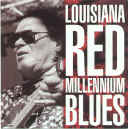 LOUISIANA RED (Iverson Minter)
LOUISIANA RED (Iverson Minter)
MILLENNIUM BLUES
EARWIG
Louisiana Red is a blues treasure. The All Music Guide to the Blues calls him, "one of the blues’ most unique and memorable characters." Red is a flamboyant guitarist and he sings, plays harmonica and writes lyrics with fervent intensity. This year marks the fiftieth anniversary of his first recording.
Life has been tough for Red. His parents both died when he was just a toddler. He lived with a succession of relatives who treated him badly and then spent years in an orphanage. He talks and sings about his hard life on his latest album, MILLENNIUM BLUES. Listening to his recollections of his years of abuse in stories and songs is fascinating.
Red’s lyrics are true-to-life and he details them vividly. He sings about his childhood, his women, his experiences in the Korean War, his dreams and visions. He accompanies his vocals with slashing guitar riffs and bottleneck blues in a style that is eerily like Muddy Waters, who backed Red up on his first recording session for Chess.
Louisiana Red moved to Germany in 1982, finding respect and financial rewards greater in Europe than at home. He has lived there ever since, with occasional visits back to America. MILLENNIUM BLUES was recorded in Chicago with some of the city’s best studio players during a recent tour.
WISH I WAS IN HEAVEN SITTING DOWN
Fat Possum R.L. Burnside made his reputation playing the kind of raw, intense blues you find only at genuine Mississippi juke joints. Wish I Was In Heaven Sitting Down is musically more sophisticated than R.L.’s earlier albums. He performs as a vocalist only this time, leaving guitar chores to Smoky Hormel and Rick Holmstrom, and guest harpists, Johnny Dyer and Lynwood Slim who provide a smooth background for R.L.’s intense depictions.R.L.’s stark view of the world has not grown any rosier on his new album, recorded at age 74. It is full of dark comments on life. He personalizes the songs--even those written by others, in such a way as to make them sound like part of his family history.
The opener, Hard Time Killing Floor, is a lament about the losses of R.L.’s brothers, uncles and father to urban warfare in Chicago. He sings with the weariness of an old man who has seen too much suffering. Gritty realism is the style here--vivid pictures of tragedy, lost loves and hopes. Nothin’ Man is an incredible musical statement and R.L’s Story is a hair-raising narrative of life and death in Chicago.
In spite of the dark topics, I found this album very enjoyable from top to bottom. (which by the way features three surprise tracks not listed in the liner notes) R.L. just reeks of authenticity--a rare commodity nowadays. Drawing room Blues this is not, but real Mississippi hill-country Blues? You can’t do better.
LAST CALL
MR. CAT
He was one of the most important cornerstones of Chicago
Blues, right there with Muddy Waters, Little Walter, Howlin’ Wolf and the others. He
was considered to be the bedrock of the Waters Band during its heyday. It is his piano you
hear on dozens of classic hits: Muddy’s Hoochie Coochie Man, Little Walter’s Key
To The Highway, Chuck Berry’s You Can’t Catch Me, Howlin’ Wolf’s Wang
Dang Doodle and on and on. In spite of his impressive credentials, Otis Spann’s name
is not well known outside hard-core blues circles. It was like that back in the early
years too, when Spann usually took a back seat to his more flamboyant contemporaries.
Spann arrived in Chicago from Mississippi the same year as Little Walter, 1947. He soon became an integral part of the Chicago Blues Scene, playing and recording over the years with nearly all of the legends. Oddly, Chess Records failed to recognize Spann’s great vocal talent and limited his solo sessions to only a few, most of which were not released for many years.
He finally broke out in 1960, recording a brilliant album with Robert Lockwood Jr. for Candid Records. He followed with more solo efforts including a collaboration with Eric Clapton. In 1969, Spann was set to launch his solo career full-time. After 16 years in the Muddy Waters Band, he gave up his chair to Pinetop Perkins. He recorded an album with Fleetwood Mac and was planning a world tour when fate stepped in.
Spann was diagnosed with terminal cancer of the liver in March, 1970. In spite of his serious illness, he flew to Boston on April 2nd with his wife Lucille and his band, and performed for three nights. The two reels of tape of these shows were lost for 25 years. They turned up last year in a San Fernando Valley storage unit. The best of the tapes comprises the new album.
The audience was small in Boston--maybe 50 people in a hall that could hold 400. They could see that Otis was not feeling well. His suit looked three sizes too big, hanging on his frail frame. He couldn’t speak above a whisper and did not sing, leaving that to his wife and lead guitarist, Luther "Snake" Johnson. He let his piano do the talking instead, playing with the style and grace, if not the power, that always identified his music. The small crowd, sensing the finality of the moment, gathered around Spann’s grand piano and remained there for the rest of the show .
As a performance, it did not rank as high as some of Spann’s earlier triumphs, like the night at the Newport Jazz Festival in 1960 when he dazzled the crowd, but as the closing chapter in a great career, this performance is an important part of the legacy of Otis Spann. He died three weeks later. He was only 40.
![]()
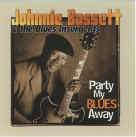 JOHNNIE
BASSETT & THE BLUES INSURGENTS
JOHNNIE
BASSETT & THE BLUES INSURGENTS
CANNONBALL
Johnnie Bassett is a marvelous performer. The editor of Real Blues called him "one of the finest blues/jazz guitarists of the decade." Listening to his latest CD makes one curious why such a skilled musician is not better known. Bassett has lived most of his life in Detroit. He’s been there since the late ‘40s when Hastings Street was giving Beale Street a run for its money.
Bassett’s guitar mastery stems from an eclectic history that includes stints with Joe Turner, Ruth Brown, Little Willie John, Tina Turner, Smokey Robinson and even Jimi Hendrix. His smooth, elegant style and velvet-coated urban sounds conjure up aural images of T-Bone Walker and B.B. King--two of his major influences. Although his first recordings were made in 1955, Bassett recorded his first solo album just three years ago. Since then, he’s recorded two more and his latest is a real treasure.
Party My Blues Away is a thoroughly enjoyable listening experience. The Blues Insurgents’ tight, horn-and-organ-driven backup is perfect for Johnnie’s cool guitar, harmonica and warm vocals. The band shuffles, stomps, and boogaloos through a collection of outstanding originals. Particularly likeable is the laid-back "Call Your Mama’s Name," and a gorgeous ballad, "Wonderin’ Blues"--a song with the feel of an instant classic.
In 1994, the Detroit Blues Society gave Johnnie Bassett a lifetime achievement award. Last year he received five W.C. Handy nominations for his 1998 album, Cadillac Blues. More nominations and awards are piling up for Party My Blues Away. It should also bring some long overdue national recognition for this captivating entertainer. TopTHE COMPLETE TRIX RECORDINGS
32 BLUES
Robert Lockwood Jr. has spent most of his long life playing
in the shadow of Robert Johnson. Johnson spent several years with Robert’s mother and
Robert Jr. regarded him as his stepfather. The relationship between the young boy and the
legendary blues icon resulted in Johnson teaching him some of his carefully guarded
playing secrets. "The only reason . . . was ‘cause he was living in the house
with my mother," Robert admits.
After Johnson’s tragic death by poisoning in 1938, Lockwood took off on his own blues odyssey. He was one of the first bluesmen to go electric and after a stay in Helena, Arkansas, playing with Sonny Boy Williamson, he found his way to Chicago. There, he quickly gained a reputation as a versatile studio musician, backing up Little Walter, Sunnyland Slim, Eddie Boyd and many others.
Lockwood recorded a few songs in the 50’s, but it was the 70’s before tiny Trix Records invited him to record two albums. He cut Contrasts in 1973, and Does 12 in 1975. Both of these albums demonstrated Lockwood’s remarkable range and are considered to be his best work. They were out of print for a decade and now have been reissued on this exceptional album.
The Complete Trix Recordings highlights the wide variety of styles that Lockwood has mastered; down-home slide, full-tilt swing, straight ahead jazz, and 12-string guitar. He puts his own imprint on his stepfather’s classics like "Dust My Broom," "Little Queen Of Spades," and "Walkin’ Blues." A song he co-wrote with Johnson, the poignant "Mr. Down Child" is a rare treat. Lockwood’s own compositions are equally moving, from the jump blues classics, "Annie’s Boogie," and "Down Home Cooking," to haunting ballads, "Little Boy Blue," and "Come Day, Go Day."
Robert Lockwood Jr. is one of the last living links to Delta blues. Only recently has he begun to receive the acclaim he deserves as one of the originators of modern blues. With the release of The Complete Trix Recordings, his available recorded legacy now includes some of his best performances.
KILLER SWAMP BLUES GUITAR -- House Rockin’ & Hip Shakin’ Vol 3
Hip-O
When it comes to down home blues, there are few labels to compare with Excello Records. Founded in 1952 by Nashville record store owner and DJ Ernie Young, Excello had a profound influence on the direction of blues and rock & roll. A major reason for Excello’s success was its connection with legendary producer Jay Miller.
Miller owned a record store in Crowley, Louisiana. He built a studio near the store and began recording local artists, releasing them on several small labels and later leasing his masters to bigger companies like Decca, Dot and Jamie. Miller found his primary outlet when he agreed to lease masters to Excello.
The small label prospered and made stars of laid-back country bluesmen like Slim Harpo, Lightnin’ Slim, Lazy Lester and Lonesome Sundown among others. Universal Music acquired the rights to these masters recently and has released three albums of Excello classics in its "House Rockin’ & Hip Shakin’" series on the HIP-O label.
Volume three features all the major players on Excello, plus lesser known (but equally "swampy") artists like Clarence Samuels, Joe Johnson, Silas Hogan and Jimmy Anderson. Miller’s production on most of the 20 tracks gives the album that instantly identifiable Excello sound. This is southern country blues at its laconic best, hot, humid and lazy. You can almost smell the Honeysuckle.
![]()
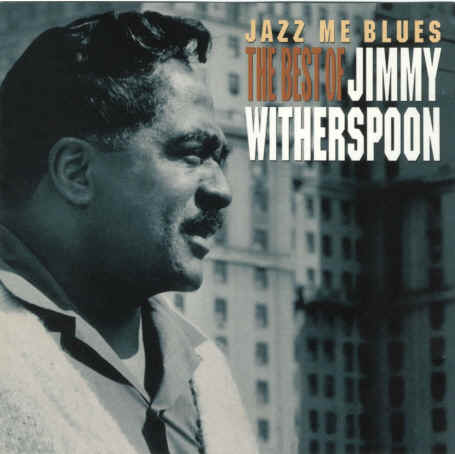
JAZZ ME BLUES
Prestige
Jimmy Witherspoon’s strong, mellifluous voice preached the blues for more than 50 years. "Spoon" had a rare talent of making lyrics seem very personal. His phrasing and timing was always impeccable. When you listen to him sing, you can’t help but share his joy and his pain.
Although he initially achieved fame as a rhythm and blues shouter in the 40's, his later recordings leaned heavily towards jazz. Probably more than anyone else, he nurtured the close relationship between jazz and blues and "Jazz Me Blues" celebrates this affinity in grand style.
Some great players perform on these tracks, recorded in the 50's and 60's. Harry "Sweets" Edison, George Benson, Teddy Edwards, Ben Webster, Gerry Mulligan, Roy Eldridge, Woody Herman and many other jazz notables contribute outstanding accompaniment to Spoon’s warm baritone. Especially enjoyable are tracks from a 1965 session with another master of laid-back blues, T-Bone Walker.
"Jazz Me Blues" was produced by long-time friend, David Axelrod, who selected some of Spoon’s most intimate sessions for the album. Try this one late at night with a glass and/or a smoke for 68 minutes of sublime satisfaction.
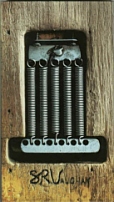 STEVIE RAY VAUGHAN
STEVIE RAY VAUGHAN
& DOUBLE TROUBLE
four-disc set on Epic Records.
When I think about the ‘80s, I remember it as mostly a decade of vapid pop muzac. Yeah, there was Sting and a few others who managed to rise out of the muck, but for the most part music was prosaic and quickly forgotten. But then along came Stevie Ray Vaughan. Blazing out of Texas like a rocket to Arcturus, he burned his way into history and became the most popular, and perhaps the most emulated bluesman of all time. The ‘80s was his decade and he played the game to the hilt--as if he knew he didn’t have much time. He was at the top when he clocked out in a helicopter crash after a concert in Wisconsin in 1990.
For a career that lasted less than 15 years, Stevie Ray managed to leave behind a considerable legacy. Five albums were released during his lifetime, and since his death a half-a-dozen more of various live shows and collections have appeared. These newer albums contain bits and pieces of outtakes and live performances that hinted at a much larger treasure chest of SRV material still unheard. Now Epic Records has opened up the vaults with this four-CD set, Stevie Ray Vaughan & Double Trouble. This collection offers more previously unreleased tracks than all the others put together and is a welcome addition to the Stevie Ray Vaughan library.
A 1977 studio take of Thunderbird opens the set, with the earliest recording released so far of Stevie Ray, playing with the popular Austin band, "Paul Ray & The Cobras." It’s interesting to hear Stevie's voice at the age of 22, before he had fully developed his vocal chops. Disc one continues with live sets from Austin, Houston and Toronto recorded between 1979 and 1981, his Grammy award-winning version of Texas Flood, recorded at the Montreaux Jazz Festival in 1982, a track from his famous appearance at El Mocambo in Toronto in 1983, and guest shots with Johnny Copeland and Albert King.
Disc two features a live performance from Hawaii in 1984, outtakes from the Soul To Soul sessions in 1985, an MTV appearance in 1987 and two previously unreleased tracks from the Carnegie Hall Concert in 1984. Disc three has more live tracks from Philadelphia in 1987, Albuquerque in ‘89, solo shots from a Texas radio show and MTV’s Unplugged, and rare tracks from his last concert at Alpine Valley, Wisconsin on August 26, 1990, the night he died.
The fourth disc in this exceptional set is a DVD with five songs from a Stevie Ray performance on Austin City Limits that was taped, but never aired.
In terms of content, this set is a monster. Usually you get only dribs and drabs of extra tracks in anthologies. Often there are lots of repeats, but most of the tracks here are in the "never before available" category. For SRV collectors this set is a must-have. And since many live versions and alternate takes of some of his most well-known songs are included, it will also serve as a fine introduction to the Texas Tornado, Stevie Ray Vaughan.
![]()
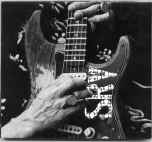 STEVIE
RAY VAUGHAN
STEVIE
RAY VAUGHANTEXAS FLOOD, COULDN’T STAND THE WEATHER, SOUL TO SOUL,
IN STEP, THE REAL DEAL: GREATEST HITS VOL. 2
SONY/LEGACY
In one of the cleverest marketing strategems of late, SONY LEGACY has reissued Stevie Ray Vaughan’s first four albums and added new liner notes and previously unavailable tracks to each. At the same time, they have released a second volume of SRV’s "greatest hits."
As the Godfather of post-70’s blues, Stevie Ray had enormous influence on younger musicians who grew up in the past two decades. You can hear his echoes in most if not all electric blues guitarists under 30--and, of course, many older players too. Vaughan’s music has never been more popular and these new additions to his limited collection of recordings are indeed welcome.
TEXAS FLOOD sports liner notes for the first time, additional photographs, an interview excerpt, and four previously unreleased tracks; a studio take of "Tin Pan Alley" recorded at the original album sessions, and three scorching numbers from a 1983 live performance at the Hollywood Palace.
COULDN’T STAND THE WEATHER also adds liner notes, photographs, a bit of an interview and four bonus tracks recorded at the original sessions in 1984, including a fiery version of Hound Dog Taylor’s "Give Me Back My Wig."
SOUL TO SOUL has expanded liner notes by Billboard editor-in-chief Timothy White, who wrote the originals, more photos, an interview excerpt and two unreleased tracks from the album sessions, a Jimi Hendrix medley of "Little Wing/Third Stone From The Sun," and "Slip Slidin’ Slim."
IN STEP, Double Trouble’s first Grammy winning album, now adds new liner notes, photographs, an interview excerpt, and four tracks captured live in Denver, Colorado in 1989, the same year the album was released. Stevie Ray stomps through "The House Is Rockin’," "Let Me Love You Baby," another version of "Texas Flood," and a marathon version of "Life Without You," which includes some spoken Stevie Ray Vaughan philosophy.
THE REAL DEAL: GREATEST HITS VOLUME 2 is a collection of album classics and fan favorites from all nine SRV albums, and a couple of rare items: Pipeline, a grammy-nominated instrumental duet with surf king Dick Dale from the out of print soundtrack album for Back To The Beach, and "Leave My Girl Alone," previously available only on a promotional CD.
Taken as a whole package, this is a monumental release, which includes a major part of the SRV recorded legacy. Those who own the original albums in this series now have to consider repurchasing them if they’re like me and hope to collect everything Stevie Ray ever did.
DELAY DOES CHICAGO
EVIDENCE
Paul deLay has been a fan of Chicago blues for a long time. His first blues hero was Paul Butterfield and through the Butterfield Blues Band, he discovered Muddy waters and the great Chicago harpmen who played in his band over the years--Little Walter, James Cotton, Junior Wells and especially Big Walter.
Although he loved Chicago blues, deLay had never visited the city until the Fall of 1997. "We were just comin’ through the midwest after we played Norway," he relates. "(We) had a night off and went down to Buddy Guy’s club where we were going to play the next night, and ran into Rockin’ Johnny Burgin and The Lazy Boys. I got to sit in on a couple of tunes and there were sparks flying all over that joint! Y’ know that’s what I love, so when I got home I just couldn’t get it out of my head so I called the label and asked them if they’d back me for a session with the guys." Evidence Records wisely agreed. "Made me feel like a big shot," says deLay.
The idea of doing a genuine "Chicago Blues" album thrilled deLay and he immediately started writing songs. "I wrote like I was scared," he confesses. "It was almost like wearing a sign saying, ‘Critics Kick Me.’ I wrote all the songs and I worked hard on it--harder than I worked in camp, and I ended up puttin’ in some good work."
Evidence has released the good work on, "deLay Does Chicago," and it is a knockout. The combination of deLay’s goosebump-level chromatic harmonica and the gutsy throb of a mainline Chicago band is pure wizardry. DeLay has developed his reputation as a blues innovator, but he thoroughly enjoyed getting back to traditional blues territory. "The people I was working with were just damn good at it--amazingly good," he says. Those guys have really tremendous chemistry. What it’s evolved into is really something outstanding.´ DeLay was also delighted to have one of his heroes, Jimmy Dawkins, as a guest on two tracks. Singer Zora Young also makes a guest appearance and co-wrote one song.
While he was in Chicago, deLay also enjoyed the food and other wonders locals take for granted. He was so taken with the city he thinks about moving there some day--a big step for a guy who has spent his whole life in Portland. "I turned down offers to move to L.A.," he says, "but Chicago--I don’t know, if there was one other city I’d like to live in, that’s the one." At the very least, he should return for an encore of this exceptional album.
POET OF THE BLUES
Legacy
For almost 20 years, Willie Dixon was the heart & soul of Chess Records. Almost single-handedly, he created the sound of Chicago blues. He wrote more than 500 songs, many of them now classics, and produced and played in most of the sessions recorded at that famous studio. He was such a powerful behind-the-scenes influence on Chicago blues that we sometimes forget he was also a terrific performer.
Legacy’s reissue of Dixon recordings is fascinating because it’s not the more familiar Chess recordings, but others made both before and after the Chess years. The early recordings, made between 1947 and 1952 when Dixon fronted the Big Three Trio, are an interesting contrast to the later sessions after Dixon left the Chess label.
The Big Three trio (really four including a guitarist) featured Leonard "Baby Doo" Caston on piano, Dixon on bass and Charles Sanders on drums. The group was so popular in the late ‘40s that they priced themselves out of the blues circuit. Only the big clubs could afford them. The recordings here are mostly Dixon originals; "I Ain’t Gonna Be Your Monkey Man," "If The Sea Was Whiskey," and the show-stopper, "Signifying Monkey."
When Leonard Chess died in the late ‘60s and Chess Records was sold, Dixon was cut loose and began thinking about performing again. (His playing had been cut to a minimum with Chess in deference to his other talents.) He put together a touring band called the Blues All-Stars to play some dates in Europe and all-stars they were with Johnny Shines on guitar, Shakey Jake on harmonica, Sunnyland Slim on piano, Clifton James on drums and Dixon on bass and vocals.
The Blues All-Stars recorded one album, "I Am The Blues," for Columbia in 1970, and the nine tracks from that album comprise the rest of this reissue. The songs chosen were some of Dixon’s best-known classics. Although they won’t make you forget the Howlin’ Wolf and Muddy Waters versions, Dixon puts his own imprint on "Backdoor Man," "Spoonful," "I’m Your Hoochie Coochie Man," and other favorites.
Willie Dixon had more to do with the shape and direction of blues than anyone. Though his Chess years are the more important contribution, his other efforts are also notable. "Poet Of The Blues" is a welcome addition to the blues monument that is the Willie Dixon legacy.
Most of the ten tracks have been previously released, classics like Ain’t Gone ‘N’ Give Up On Love, Leave My Girl Alone, May I Have A Talk With You, and Chitlins Con Carne, but there are a few noteworthy extras.
There’s a previously unreleased version of The Sky Is Crying from the sessions that produced the album, Couldn’t Stand The Weather. Another sweet treat is the live version of Tin Pan Alley, performed with Johnny Copeland at the Montreaux Festival in 1985.
Probably the best version of Texas Flood that Stevie Ray ever recorded is on the new CD, previously available only on the video, Live At The El Macambo (an incredibly hot performance). The closer is a 15-minute take of the title track, Blues At Sunrise, recorded with Albert King in Canada in 1983 and released not long ago on the CD, In Session.
Bill Bentley wrote the liner notes for the new CD and this quote is worth repeating; "Guitar players spend their whole life looking for the magic combination of wood, steel and electricity, mixed together to cause toes to curl and flesh to bump. Souls get sold and lies get told in search of that Holy Sound. Stevie had it from the start."
![]()
TELARC
Mighty Sam is in a good place these days. His vocal power was never stronger. His career is on the upswing as he celebrates life with his new album. Although he had a minor hit in the sixties, Sam was largely "undiscovered" until his string of albums for Audioquest was released in the ‘90s. Since then he’s collected numerous awards and nominations for his stirring brand of Southern soul blues.
Sam is a deeply religious man. He was born and raised in Louisiana and started singing in his mother’s gospel groups when he was 5 years old. There’s a strong gospel influence on Blues For The Soul, and the gospel carries over into the blues, especially on the long, slow "Jesus Got The Blues," and "Love One Another." Sam wrote 12 originals for the new album. Favorite tracks include "No One Can Take Your Place," "Dark Side Of The Street," and the autobiographical "Sing Me Some Blues."
Sam gets great backup from Bruce Katz on keyboards, Kevin Belz on guitar and the Mighty (hot) Horns. Equal parts blues, soul and gospel, Blues For The Soul is another star in the crown of Mighty Sam McClain, now collecting on some long-paid dues and enjoying his role as one of the top soul blues singers performing today.
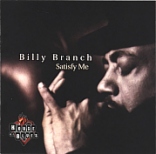 SATISFY ME
HOUSE OF BLUES
Billy Branch gives several nods to his
musical heroes in his first CD on the House of Blues label. Satisfy Me is not an
all-blues album, but rather, presents the veteran Chicago bluesman in a variety of musical
milieus.
SATISFY ME
HOUSE OF BLUES
Billy Branch gives several nods to his
musical heroes in his first CD on the House of Blues label. Satisfy Me is not an
all-blues album, but rather, presents the veteran Chicago bluesman in a variety of musical
milieus.
On "Pay Or Stay" he evokes memories of Sonny Boy. "Son of Juke" is an obvious bow to Little Walter. Branch rocks out on "Boogie Man" and "Goin’ Down," two songs associated with Freddie King. He gets off a wicked solo on Muddy Waters’ "Same Thing," and he takes an old Bill Withers song, "Kissin’ My Love," and gives it some new energy.
Branch’s harp work is superb throughout this album and the mix of songs is pleasant listening. After listening to Satisfy Me, I’m satisfied that Billy Branch is destined to play a major role in 21st century blues.
Top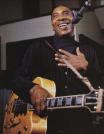 T-BONE WALKER
THE VERY BEST OF
KOCH
Aaron "T-Bone" Walker holds
a unique place in blues history. Almost singlehandedly, he created the single note guitar solo,
without which there would be no rock & roll and blues would still be dominated by the
piano. T-Bone’s brilliant style and concepts have affected nearly every guitar player
alive, and his recordings remain some of most listenable and enjoyable ever made.
T-BONE WALKER
THE VERY BEST OF
KOCH
Aaron "T-Bone" Walker holds
a unique place in blues history. Almost singlehandedly, he created the single note guitar solo,
without which there would be no rock & roll and blues would still be dominated by the
piano. T-Bone’s brilliant style and concepts have affected nearly every guitar player
alive, and his recordings remain some of most listenable and enjoyable ever made.
T-Bone was born and grew up in Texas. He made his first recording in 1929, using the name "Oak Cliff T-Bone." When electric guitar amplifiers were introduced in the late 30’s, it was T-Bone who pioneered the new sound and started the trend which made the guitar the most popular instrument of the ‘50s and succeeding decades. His distinguished recording career stretched over 45 years.
Some of T-Bone’s best session work was done in the late ‘40s and early ‘50s when he recorded for the Black & White and Imperial labels. His entire output for both labels has previously been issued on CD, but for someone who does not have those multiple-disc sets, this compilation is a nice compromise.
The Very Best Of T-Bone Walker actually lives up to its title, with eight tracks from the Black & White sessions, recorded in 1949, and eight tracks from the Imperial sessions, recorded between 1950 and 1953. All the classics are here: Stormy Monday, The Hustle Is On, Midnight Blues, Strollin’ With Bones, It’s A Lowdown Dirty Deal, and of course the inevitable T-Bone Shuffle, probably the most recorded instrumental of all time.
This album is a terrific introduction to T-Bone’s music and will very likely inspire purchasers to get the complete Black & White and Imperial collections in order to hear the rest of this most productive period of one of America’s greatest blues innovators.
![]()